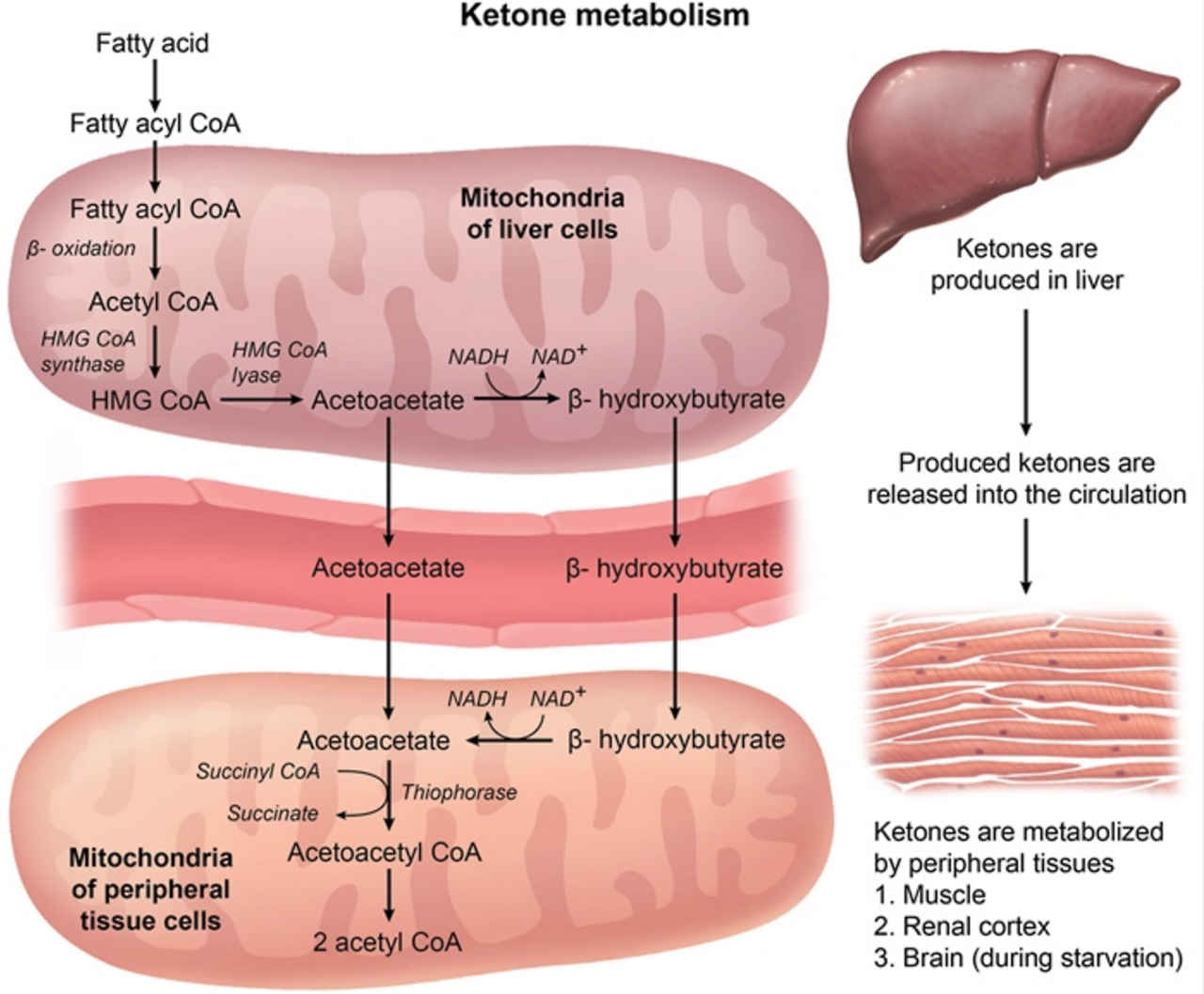how does the liver make ketones Pin on keto
Ketone bodies are a fascinating aspect of metabolism that really illustrates how the body can adapt to different conditions. These organic compounds are produced in the liver and can be used as an alternative source of energy when glucose is in short supply.
What are Ketone Bodies?
Ketone bodies are a group of three organic compounds that include acetone, acetoacetate, and beta-hydroxybutyrate. They are produced in the liver when glucose levels are low, such as during fasting or prolonged exercise. They are also produced when someone follows a ketogenic diet that is low in carbohydrates.
 When glucose levels are low, the liver starts to break down fatty acids that are stored in adipose tissue. These fatty acids are converted to Acetyl-CoA, which can either enter the citric acid cycle to produce ATP or be converted to ketone bodies. The ketone bodies can then be transported to other tissues, such as the brain, where they can be used as an alternative source of energy.
When glucose levels are low, the liver starts to break down fatty acids that are stored in adipose tissue. These fatty acids are converted to Acetyl-CoA, which can either enter the citric acid cycle to produce ATP or be converted to ketone bodies. The ketone bodies can then be transported to other tissues, such as the brain, where they can be used as an alternative source of energy.
Ketone Bodies and Ketosis
One of the most well-known conditions associated with ketone bodies is ketosis. This occurs when someone follows a very low carbohydrate diet, such as a ketogenic diet. By restricting carbohydrates, the body is forced to use alternative sources of energy, such as ketone bodies. This results in high levels of ketone bodies in the blood, which can be measured using a urine or blood test.
 Ketosis is not the same as ketoacidosis, which is a dangerous condition associated with uncontrolled diabetes. In ketoacidosis, high levels of ketone bodies lower the pH of the blood, which can be life-threatening. This is why it is important to monitor blood glucose and ketone levels in people with diabetes.
Ketosis is not the same as ketoacidosis, which is a dangerous condition associated with uncontrolled diabetes. In ketoacidosis, high levels of ketone bodies lower the pH of the blood, which can be life-threatening. This is why it is important to monitor blood glucose and ketone levels in people with diabetes.
Benefits of Ketone Bodies
Ketone bodies may have a number of potential benefits. For example, they may help to regulate hunger by suppressing appetite. They have also been shown to improve mental clarity and cognitive function in some people. Additionally, they may have anti-inflammatory properties and could be used to treat conditions such as epilepsy and Alzheimer’s disease.
Overall, ketone bodies are an important aspect of metabolism that can be used as an alternative source of energy when glucose levels are low. While more research is needed to fully understand their potential benefits, they are certainly an interesting area of study in the field of nutrition and metabolism.
If you are searching about Ketones and Your Brain - Metabolic Performance you’ve came to the right web. We have 5 Pictures about Ketones and Your Brain - Metabolic Performance like ketone production by liver during fasting conditions aka ketosis, The Ketogenic Diet: Fueling the Body with Fat | Dirt to Dinner and also Pin on Keto. Here you go:
Ketones And Your Brain - Metabolic Performance
 metabolicperformance.netketones liver brain ahahaha
metabolicperformance.netketones liver brain ahahaha
The Ketogenic Diet: Fueling The Body With Fat | Dirt To Dinner
 www.dirt-to-dinner.comketone ketones acetone bodies acetoacetate body bhb types diet why ketogenic keto fat levels beta hydroxybutyrate ketosis acid look does
www.dirt-to-dinner.comketone ketones acetone bodies acetoacetate body bhb types diet why ketogenic keto fat levels beta hydroxybutyrate ketosis acid look does
USMLE Notes - Ketone Bodies Are Produced In The Liver And Can Be…
 usmle-notes.tumblr.comketone liver usmle mitochondrial peripheral ketones mitochondria tissues
usmle-notes.tumblr.comketone liver usmle mitochondrial peripheral ketones mitochondria tissues
Pin On Keto
 www.pinterest.comketo ketosis process ketones diet weight
www.pinterest.comketo ketosis process ketones diet weight
Ketone Production By Liver During Fasting Conditions Aka Ketosis
 www.pinterest.comketones ketone ketose cetonas ketosis fasting ayuno insulin hati intermitente glucose symptome endocrino grippe marta peranan darah gula conditions insulina
www.pinterest.comketones ketone ketose cetonas ketosis fasting ayuno insulin hati intermitente glucose symptome endocrino grippe marta peranan darah gula conditions insulina
Keto ketosis process ketones diet weight. Ketone ketones acetone bodies acetoacetate body bhb types diet why ketogenic keto fat levels beta hydroxybutyrate ketosis acid look does. Ketones and your brain